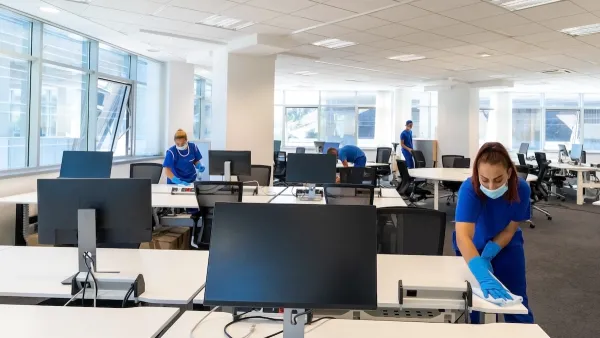Suburban growth in the DC area has been fueled by low gas prices and abundant freeways. Expensive gas has changed this growth paradigm as commuters shift to public transit and seek close-in homes. Will government respond to the change in the market?
"As more and more families reconsider their dreams, land-use experts are beginning to ask whether $4-a-gallon gas is enough to change the way Americans have thought for half a century about where they live. Since the end of World War II, government policy has funded and encouraged the suburban lifestyle, subsidizing highways while starving mass transit and keeping gas taxes much lower than in some other countries.
Local land-use policies kept housing densities low, pushing development to the periphery of metropolitan regions and forcing families who wanted their dream house to accept long commutes and a lack of any real transportation choices other than getting behind the wheel.
"There is a whole confluence of government policies...that have subsidized sprawl," said Bruce Katz, director of the Metropolitan Policy Program at the Brookings Institution.
But there's been a radical shift in recent months. Americans drove 9.6 billion fewer highway miles in May than a year earlier. In the Washington area and elsewhere, mass transit ridership is setting records. Last year, transit trips nationwide topped 10.3 billion, a 50-year high."
Thanks to Preston Schiller
FULL STORY: OIL SHOCK: Gas Prices Apply Brakes To Suburban Migration

National Parks Layoffs Will Cause Communities to Lose Billions
Thousands of essential park workers were laid off this week, just before the busy spring break season.

Retro-silient?: America’s First “Eco-burb,” The Woodlands Turns 50
A master-planned community north of Houston offers lessons on green infrastructure and resilient design, but falls short of its founder’s lofty affordability and walkability goals.

Delivering for America Plan Will Downgrade Mail Service in at Least 49.5 Percent of Zip Codes
Republican and Democrat lawmakers criticize the plan for its disproportionate negative impact on rural communities.

Test News Post 1
This is a summary

Test News Headline 46
Test for the image on the front page.

Balancing Bombs and Butterflies: How the National Guard Protects a Rare Species
The National Guard at Fort Indiantown Gap uses GIS technology and land management strategies to balance military training with conservation efforts, ensuring the survival of the rare eastern regal fritillary butterfly.
Urban Design for Planners 1: Software Tools
This six-course series explores essential urban design concepts using open source software and equips planners with the tools they need to participate fully in the urban design process.
Planning for Universal Design
Learn the tools for implementing Universal Design in planning regulations.
EMC Planning Group, Inc.
Planetizen
Planetizen
Mpact (formerly Rail~Volution)
Great Falls Development Authority, Inc.
HUDs Office of Policy Development and Research
NYU Wagner Graduate School of Public Service





























